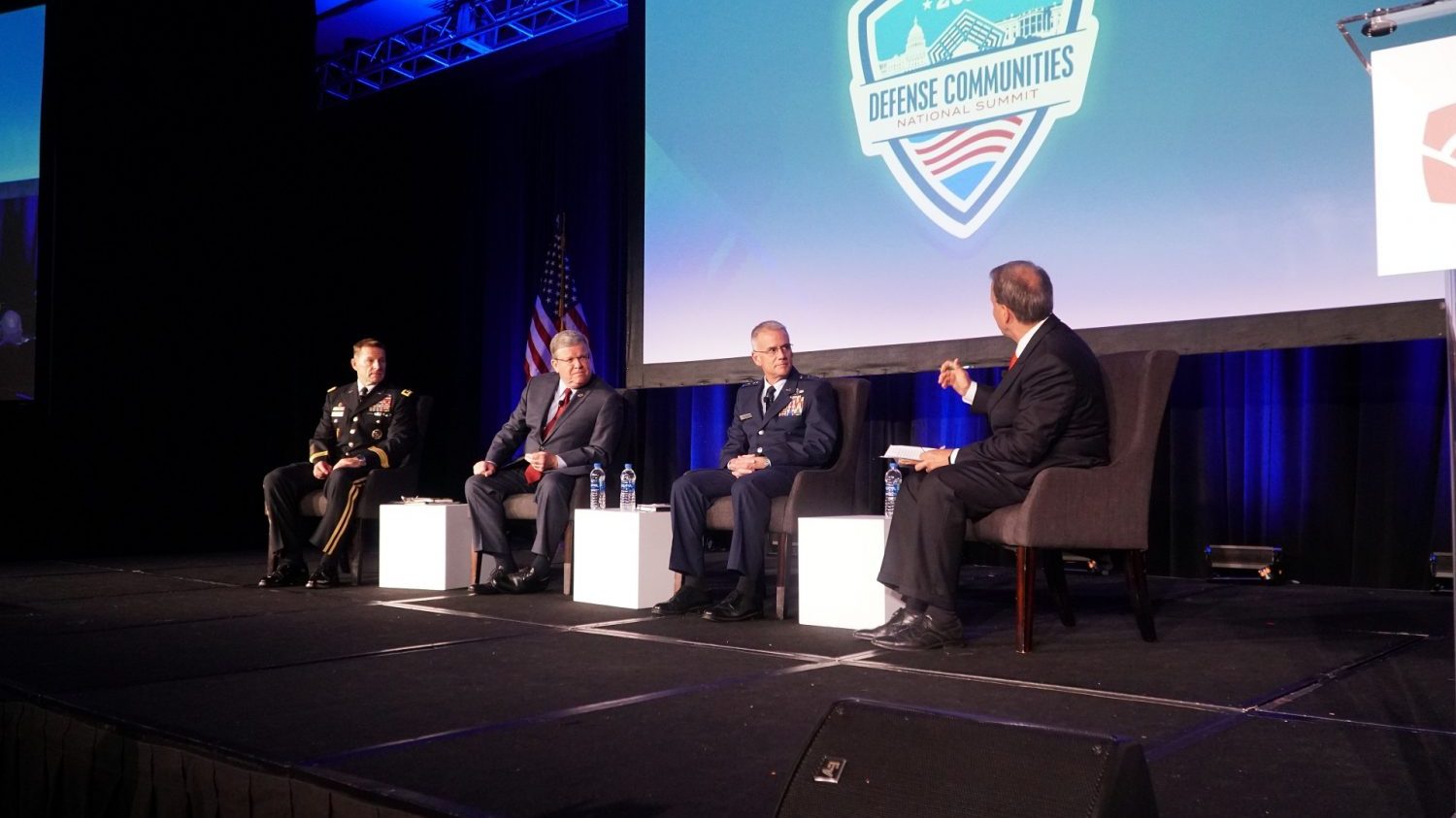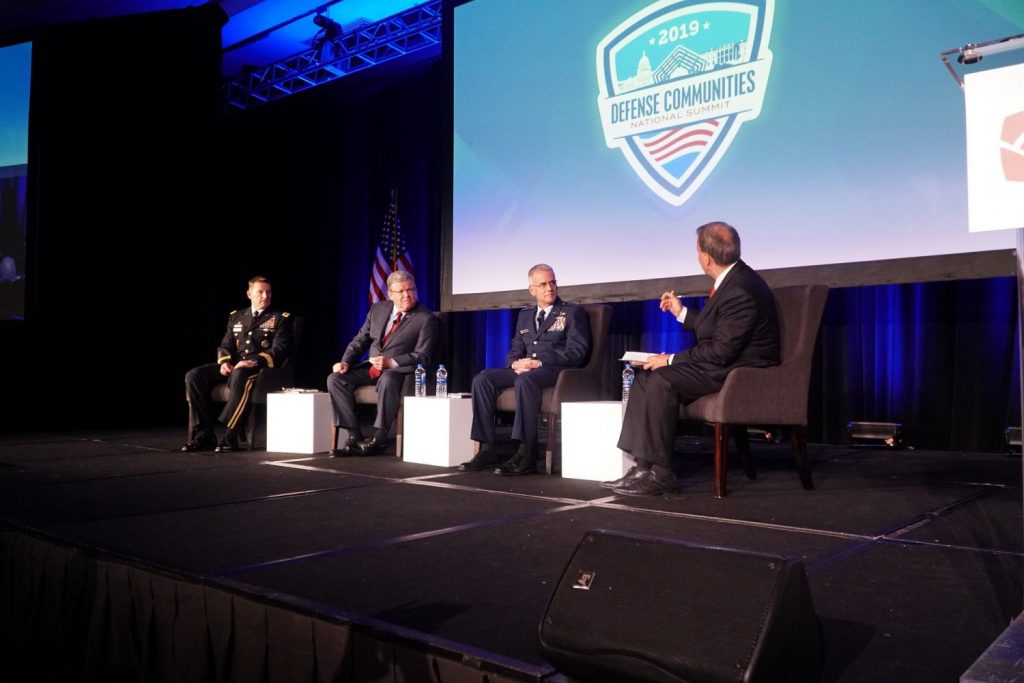Army, Air Force and Exchange Leadership Voice Support for Modern Campus Dining Benefit


The Army, Air Force and the Department of Defense’s largest retailer are committing to transforming on-installation dining to better meet the nutritional needs of Warfighters. From left: Installation Management Command Commander Lt. Gen. Bradley Becker; U.S. Air Force Academy Superintendent Lt. Gen. Jay Silveria; Army & Air Force Exchange Service Director/CEO Tom Shull; and Military Community and Family Policy Acting Deputy Assistant Secretary of Defense Chuck Milam.
The Army, Air Force and the Department of Defense’s largest retailer are committing to transforming on-installation dining to better meet the nutritional needs of Warfighters.
At the June 11 Association of Defense Communities’ national summit in Washington DC, Installation Management Command Commander Lt. Gen. Bradley Becker, U.S. Air Force Academy Superintendent Lt. Gen. Jay Silveria and Army & Air Force Exchange Service Director/CEO Tom Shull joined former Military Community and Family Policy Acting Deputy Assistant Secretary of Defense Chuck Milam to discuss plans to partner and modernize food service on Army posts and Air Force bases.
“Everyone’s on board,” Milam said. “Everyone wants to do the right thing. Everyone wants to feed our troops healthier options.”
Allowing Warfighters to use their meal entitlements at Exchange restaurants and Express convenience stores is at the center of efforts to modernize dining on installations. Service members receive an entitlement for three meals a day in dining facilities, but only use their meal cards for 1.5 or fewer meals daily, Milam said.
“They are going out of pocket outside the military dining facility to spend their own money,” he said. “Their entitlement isn’t being used.”
‘All in’ on campus-dining model
A campus-dining model will optimize the meal entitlement program, Shull said, especially appealing to younger generations of Soldier and Airmen who expect more choices.
“Efficiencies will be gained, and healthy food will be more accessible and convenient,” Shull said. “The Exchange is all in. This will increase retention and benefit readiness and resiliency for Warfighters and their families.”
An eight-month-old Air Force Academy campus dining pilot is already under way that the Exchange is soon expected to join.
“We need to partner with the Exchange so Cadets can go to an Exchange restaurant, giving them choices and allowing them to use their entitlement,” Silveria said.
Test locations are being considered for the Army as well.
“As IMCOM partners with the Army G-4, G-9, the commissary, the Exchange and more, campus dining is the answer,” Becker said. “This will offer another option for our service members to use their meal card and use the benefit they have to get healthy options without necessarily going to the dining facility.”
‘Part of the solution’
The Exchange is aligned with Operative Live Well, Healthy Army Communities and Air Force Smarter Fueling. All of the Exchange’s 1,700 restaurants serve better-for-you options—and 108 million meals are served annually.
“We have grown our better-for-you concepts dramatically,” Shull said. “Subway, Boston Market, Freshens—the list goes on. We are committed to making sure our restaurants offer meals that are nutritious and taste good. Additionally, the Exchange has the capacity to serve an additional 50 million meals each year.”
Exchange Express convenience stores offer more than 450 BE FIT items, including salads, fruit and other grab-and-go fare. For the Exchange, Shull said, campus dining will allow the organization to further strengthen force readiness and resiliency.
“We have an obligation to support Warfighters,” Shull said. “We want to be part of the solution.”

